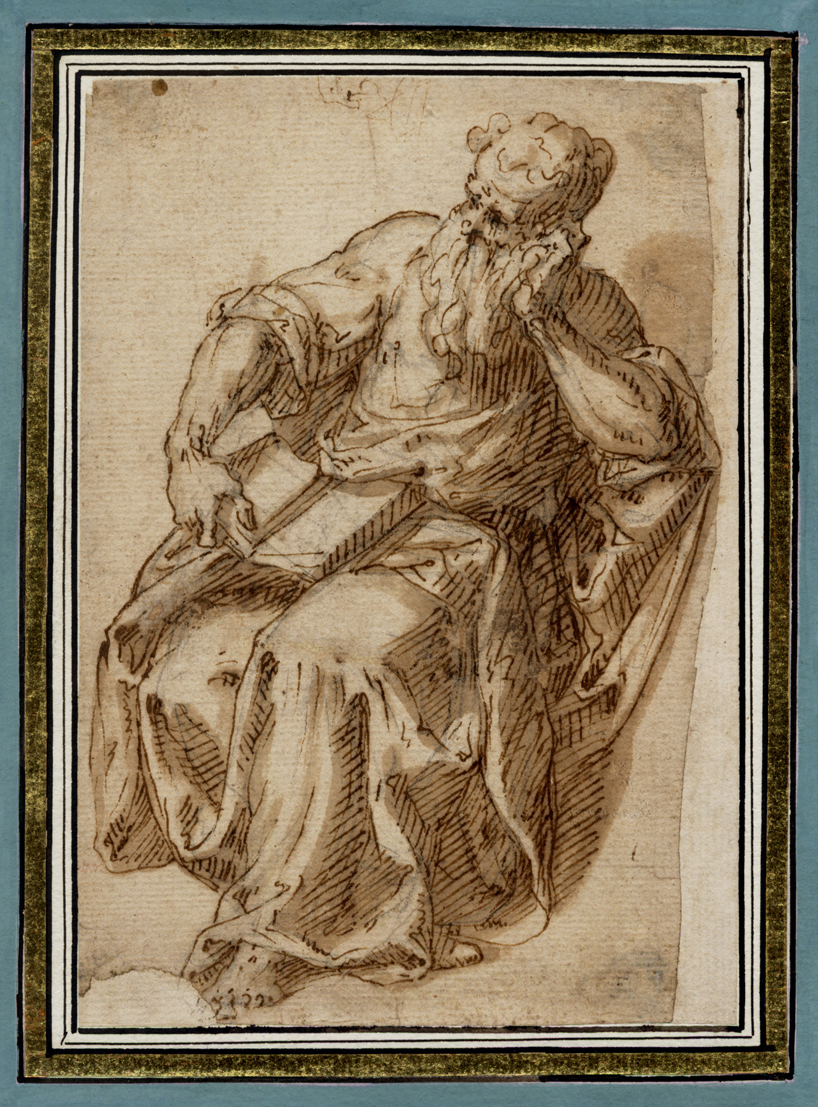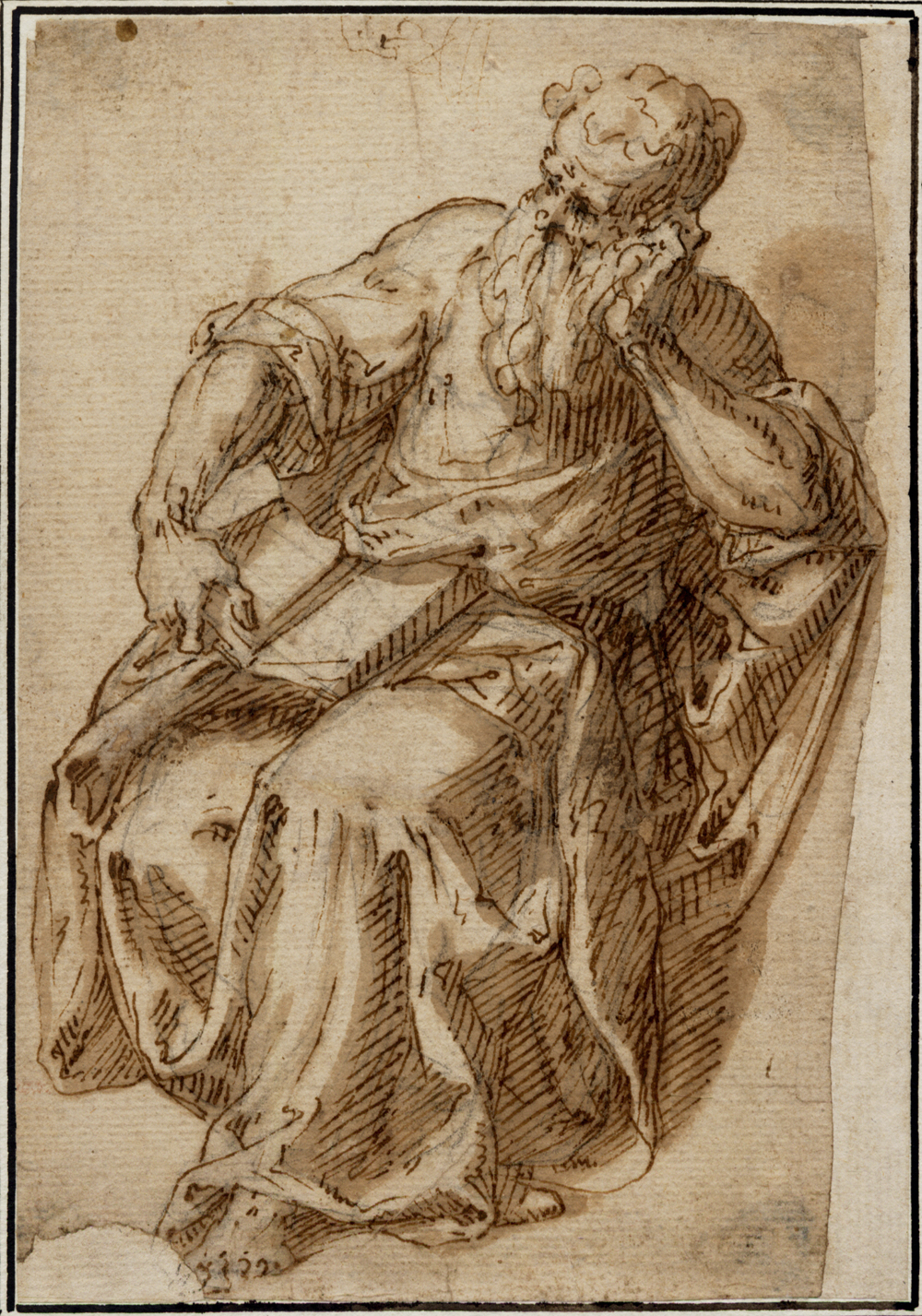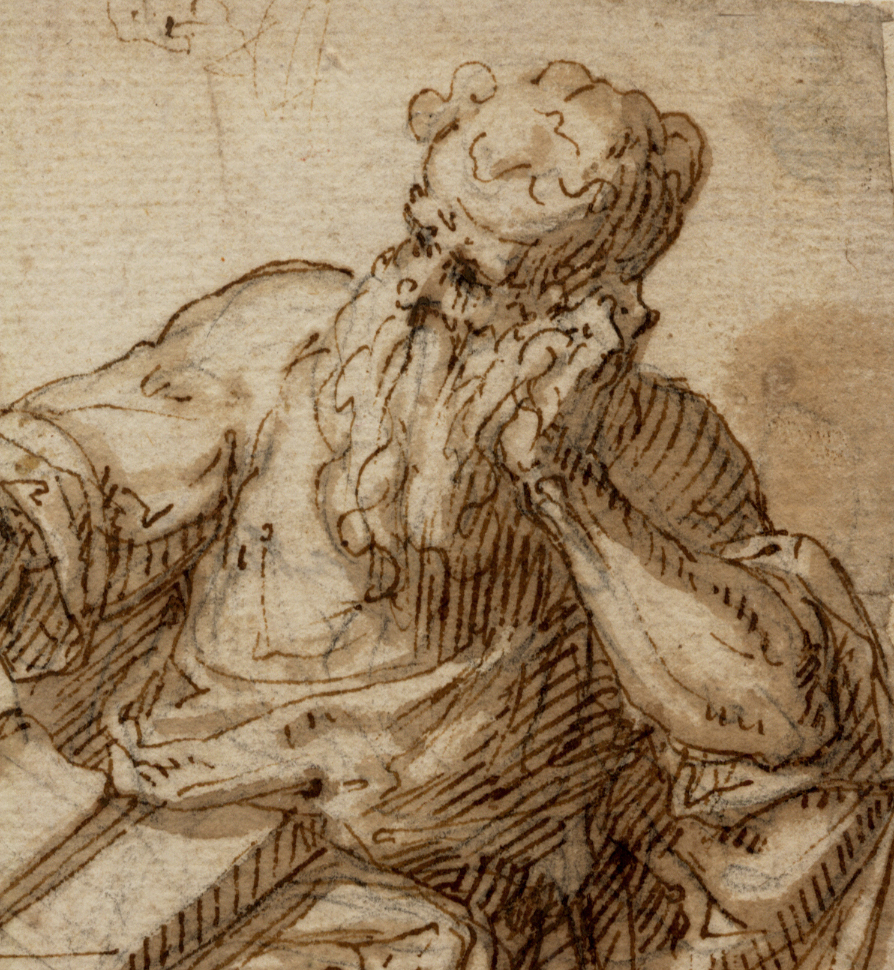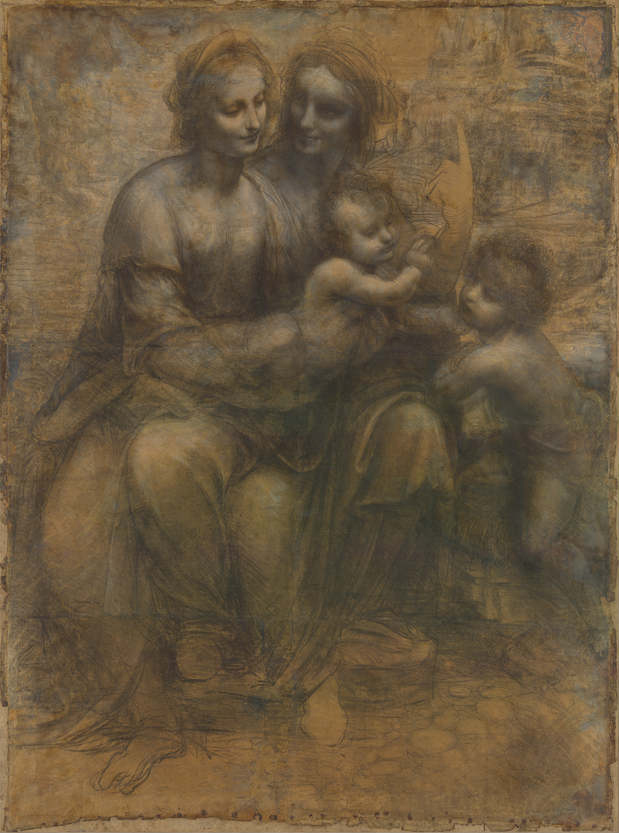AURELIO LUINI (Luino 1530 – 1593 Milan)
Aurelio Luini (Luino 1530 – 1593 Milan)
A Seated Prophet, holding a book
Pen and brown ink and brown wash over black chalk, 163 x 112 mm (6.4 x 4.4 inch); laid down onto a mount with framing lines in black ink, blue wash and gold leaf
Provenance
~ Anonymous collector’s (?) inscription ‘M:A:B:’ on the mount (red chalk)
~ Anonymous sale, London, Christie's, 29 March 1966, lot 39 (as Palma Giovane);
~ Purchased at the above sale by Ralph Holland (1917-2012), until sold:
~ Sotheby’s, London, 5 July 2013, ‘Galleria Portatile’, The Ralph Holland Collection, lot 408
Exhibited
Italian and Other Drawings, 1500-1800, Newcastle upon Tyne (Hatton Gallery) 1974, no. 19
***
Aurelio Luini belonged to a dynasty of Milanese painters founded by his father, Bernardino Luini (c.1482-1532), together with Andrea Solario one of Leonardo da Vinci’s immediate followers. Even though his father died when Aurelio was an infant, the son remained faithful to his father’s stylistic personality, much influenced by Leonardo, although the son's works display a greater naturalism.1 It is known through the account of a contemporary writer that Luini owned a small book of about fifty red-chalk caricatures by Leonardo, which must have inspired the artist as caricature drawings by Aurelio in Leonardo’s manner are preserved in the Biblioteca Ambrosiana, Milan. He also inherited from his father the famous Leonardo cartoon of the Virgin and Child with St Anne, now in the National Gallery, London (fig.).2
Luini and his brother and sometime collaborator Gian Pietro were the best of Milan’s native painters, and are considered among the last of the Lombard Mannerists. His early style, as seen in his frescoes of the Life of Christ begun in 1555 in the church of San Vincenzo alle Monache, recalled his father’s work, uniting attention to detail with Leonardo’s soft, chiaroscuro modeling. His mature manner adopted monumental figures with eloquent gestures and a pious demeanor. Luini was supported primarily by religious societies, and his works still decorate many churches in and around Milan.
Luini was an active draughtsman and a small drawn oeuvre is known, with examples in the major cabinets. Typical for the artist are the nervous pen lines describing forms, which can also be observed here. Stylistically our drawing can be compared with a sheet of studies of Prophets in the Royal Collection at Windsor (fig.).3 The facial features and the manner in which the Prophet's head has been depicted here can also be compared with Studies of the head of a bearded man and figures for a Lamentation, sold at Sotheby's in 1997.4
1. For the artist, see N. Ward Neilson, ‘A Drawing by Aurelio Luini’, Master Drawings, vol. 25, no. 2 (Summer, 1987), pp. 151-52 and 184; and G. Bora, 'Da Leonardo all'Accademia della Val di Bregno: Giovan Paolo Lomazzo, Aurelio Luini e i disegni degli accademici', in: Raccolta Vinciana, XXIII, 1989, pp. 73-101.
2. John T. Paoletti and Gary M. Radke, Art in Renaissance Italy, London 2005, p. 380.
3. A.E. Popham and J. Wilde, The Italian Drawings of the XV and XVI Centuries ... at Windsor Castle, London 1949, p. 242, no. 408, reproduced pl. 148.
4. Sotheby’s, London, 2 July 1997, lot 43.




